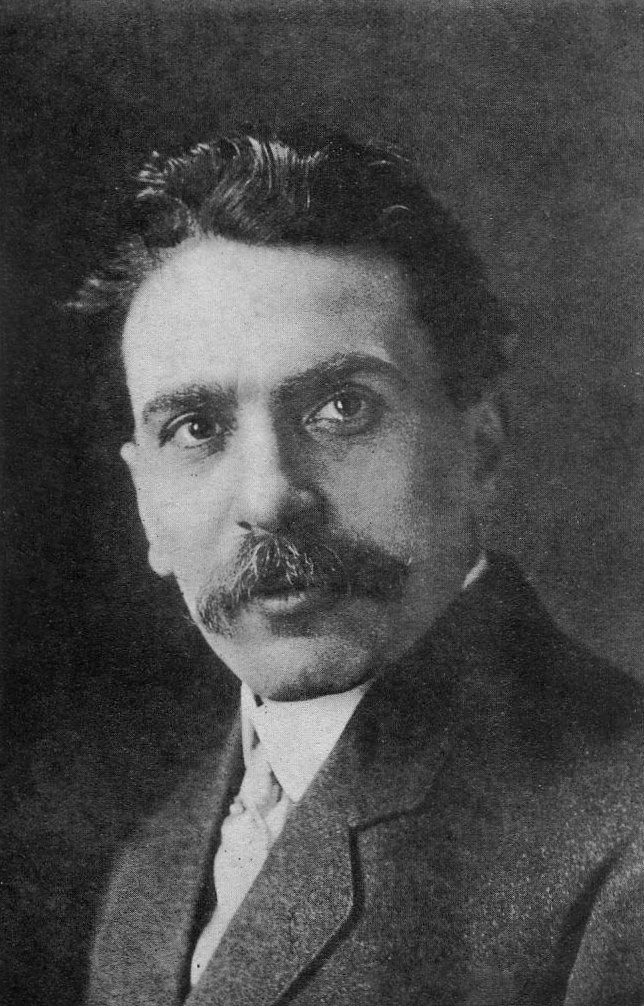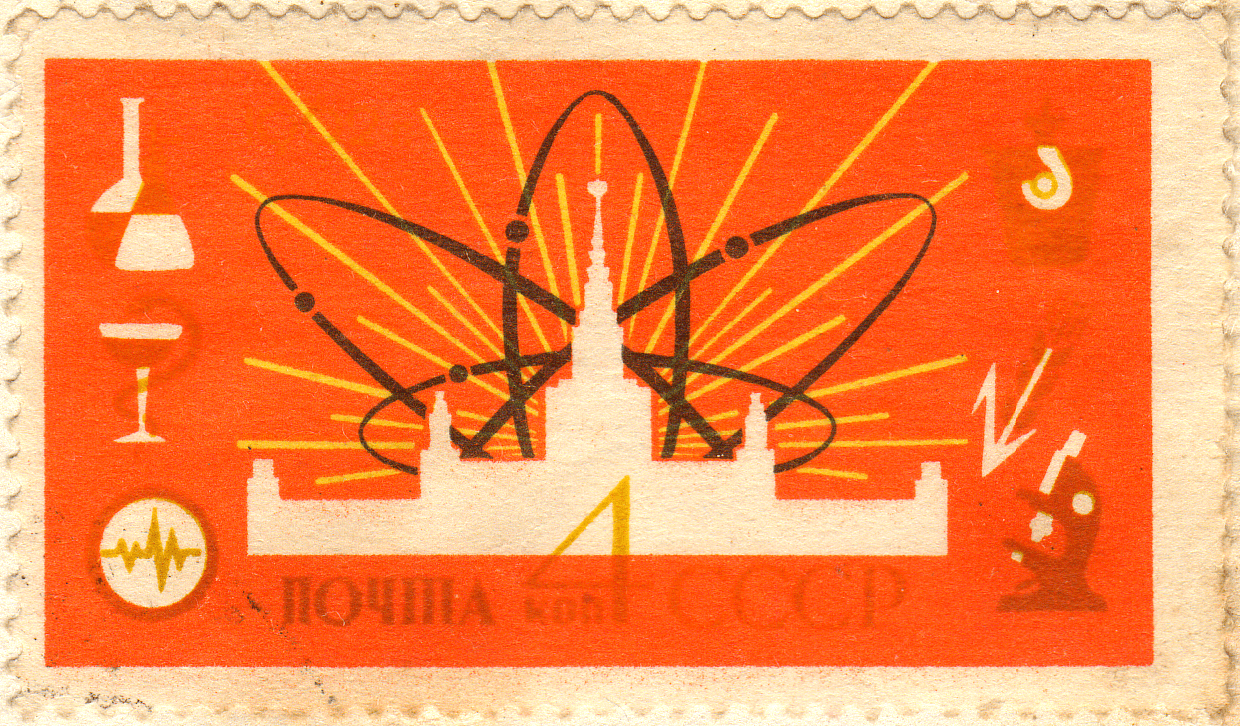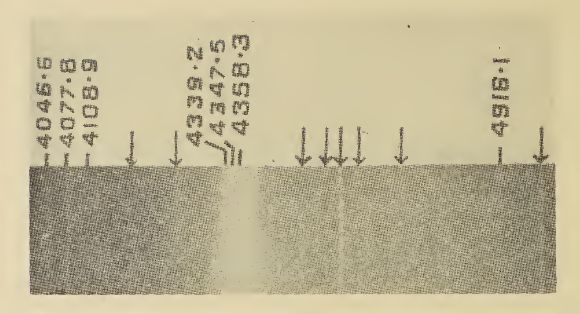|
Leonid Mandelshtam
Leonid Isaakovich Mandelstam or Mandelshtam ( rus, Леонид Исаакович Мандельштам, p=lʲɪɐˈnʲit ɨsɐˈakəvʲɪtɕ mənʲdʲɪlʲˈʂtam, a=Ru-Leonid_Mandelstam.ogg, links=y; 4 May 1879 – 27 November 1944) was a Soviet and Russian physicist. Life Leonid Mandelstam was born in Mogilev, Russian Empire (now Belarus) into a Jewish family. He studied at the Novorossiya University in Odesa, but was expelled in 1899 due to political activities, and continued his studies at the University of Strasbourg. He remained in Strasbourg until 1914, and returned with the beginning of World War I. He was awarded the Stalin Prize in 1942. He died in Moscow, aged 65. Scientific achievements The main emphasis of his work was broadly considered theory of oscillations, which included optics and quantum mechanics. He was a co-discoverer of inelastic ''combinational scattering of light'' used now in Raman spectroscopy (see below). This paradigm-altering discovery ( ... [...More Info...] [...Related Items...] OR: [Wikipedia] [Google] [Baidu] |
Mogilev
Mogilev (; , ), also transliterated as Mahilyow (, ), is a city in eastern Belarus. It is located on the Dnieper, Dnieper River, about from the Belarus–Russia border, border with Russia's Smolensk Oblast and from Bryansk Oblast. As of 2024, it has a population of 353,110. In 2011, its population was 360,918, up from an estimated 106,000 in 1956. It serves as the administrative centre of Mogilev Region, and is the List of cities and largest towns in Belarus, third-largest city in Belarus. History The city was first mentioned in historical records in 1267. From the 14th century, it was part of the Grand Duchy of Lithuania, and since the Union of Lublin (1569), it has been part of the Polish–Lithuanian Commonwealth, where it became known as ''Mohylew''. In the 16th and 17th centuries, the city flourished as one of the main nodes of the east-west and north-south trading routes. In 1577, Grand Duke Stefan Batory granted it Magdeburg law, city rights under Magdeburg law. In 1 ... [...More Info...] [...Related Items...] OR: [Wikipedia] [Google] [Baidu] |
Oscillation
Oscillation is the repetitive or periodic variation, typically in time, of some measure about a central value (often a point of equilibrium) or between two or more different states. Familiar examples of oscillation include a swinging pendulum and alternating current. Oscillations can be used in physics to approximate complex interactions, such as those between atoms. Oscillations occur not only in mechanical systems but also in dynamic systems in virtually every area of science: for example the beating of the human heart (for circulation), business cycles in economics, predator–prey population cycles in ecology, geothermal geysers in geology, vibration of strings in guitar and other string instruments, periodic firing of nerve cells in the brain, and the periodic swelling of Cepheid variable stars in astronomy. The term ''vibration'' is precisely used to describe a mechanical oscillation. Oscillation, especially rapid oscillation, may be an undesirable phenomenon in ... [...More Info...] [...Related Items...] OR: [Wikipedia] [Google] [Baidu] |
Metamaterial
A metamaterial (from the Greek word μετά ''meta'', meaning "beyond" or "after", and the Latin word ''materia'', meaning "matter" or "material") is a type of material engineered to have a property, typically rarely observed in naturally occurring materials, that is derived not from the properties of the base materials but from their newly designed structures. Metamaterials are usually fashioned from multiple materials, such as metals and plastics, and are usually arranged in repeating patterns, at scales that are smaller than the wavelengths of the phenomena they influence. Their precise shape, geometry, size, orientation, and arrangement give them their "smart" properties of manipulating electromagnetic, acoustic, or even seismic waves: by blocking, absorbing, enhancing, or bending waves, to achieve benefits that go beyond what is possible with conventional materials. Appropriately designed metamaterials can affect waves of electromagnetic radiation or sound in a manner n ... [...More Info...] [...Related Items...] OR: [Wikipedia] [Google] [Baidu] |
Raman Scattering
In chemistry and physics, Raman scattering or the Raman effect () is the inelastic scattering of photons by matter, meaning that there is both an exchange of energy and a change in the light's direction. Typically this effect involves vibrational energy being gained by a molecule as incident photons from a visible laser are shifted to lower energy. This is called ''normal Stokes-Raman scattering''. Light has a certain probability of being scattered by a material. When photons are scattered, most of them are elastic scattering, elastically scattered (Rayleigh scattering), such that the scattered photons have the same energy (frequency, wavelength, and therefore color) as the incident photons, but different direction. Rayleigh scattering usually has an intensity in the range 0.1% to 0.01% relative to that of a radiation source. An even smaller fraction of the scattered photons (about 1 in a million) can be scattered ''inelastically'', with the scattered photons having an energy di ... [...More Info...] [...Related Items...] OR: [Wikipedia] [Google] [Baidu] |
American Chemical Society
The American Chemical Society (ACS) is a scientific society based in the United States that supports scientific inquiry in the field of chemistry. Founded in 1876 at New York University, the ACS currently has more than 155,000 members at all degree levels and in all fields of chemistry, chemical engineering, and related fields. It is one of the world's largest scientific societies by membership. The ACS is a 501(c) organization, 501(c)(3) non-profit organization and holds a congressional charter under Title 36 of the United States Code. Its headquarters are located in Washington, D.C., and it has a large concentration of staff in Columbus, Ohio. The ACS is a leading source of scientific information through its peer-reviewed scientific journals, national conferences, and the Chemical Abstracts Service. Its publications division produces over 80 Scientific journal, scholarly journals including the prestigious ''Journal of the American Chemical Society'', as well as the weekly tr ... [...More Info...] [...Related Items...] OR: [Wikipedia] [Google] [Baidu] |
Zeitschrift Für Physik
''Zeitschrift für Physik'' (English: ''Journal for Physics'') is a defunct series of German peer-reviewed physics journals established in 1920 by Springer Berlin Heidelberg. The series ended publication in 1997, when it merged with other journals to form the new '' European Physical Journal'' series. It had expanded to four parts over the years. History *''Zeitschrift für Physik'' (1920–1975 ), The first three issues were published as a supplement to '' Verhandlungen der Deutschen Physikalischen Gesellschaft''. The journal split in parts A and B in 1975. :*''Zeitschrift für Physik A'' (1975–1997). The original subtitle was ''Atoms and Nuclei'' (). In 1986, it split into ''Zeitschrift für Physik A: Atomic Nuclei'' () and ''Zeitschrift für Physik D: Atoms, Molecules and Clusters''. ''Zeitschrift für Physik A'' continues as the '' European Physical Journal A''. :*''Zeitschrift für Physik B'' (1975–1997) resulted from the split of ''Zeitschrift für Physik' ... [...More Info...] [...Related Items...] OR: [Wikipedia] [Google] [Baidu] |
Crystal
A crystal or crystalline solid is a solid material whose constituents (such as atoms, molecules, or ions) are arranged in a highly ordered microscopic structure, forming a crystal lattice that extends in all directions. In addition, macroscopic single crystals are usually identifiable by their geometrical shape, consisting of flat faces with specific, characteristic orientations. The scientific study of crystals and crystal formation is known as crystallography. The process of crystal formation via mechanisms of crystal growth is called crystallization or solidification. The word ''crystal'' derives from the Ancient Greek word (), meaning both "ice" and " rock crystal", from (), "icy cold, frost". Examples of large crystals include snowflakes, diamonds, and table salt. Most inorganic solids are not crystals but polycrystals, i.e. many microscopic crystals fused together into a single solid. Polycrystals include most metals, rocks, ceramics, and ice. A third cat ... [...More Info...] [...Related Items...] OR: [Wikipedia] [Google] [Baidu] |
Rayleigh Scattering
Rayleigh scattering ( ) is the scattering or deflection of light, or other electromagnetic radiation, by particles with a size much smaller than the wavelength of the radiation. For light frequencies well below the resonance frequency of the scattering medium (normal dispersion relation, dispersion regime), the amount of scattering is inversely proportional to the fourth power of the wavelength (e.g., a blue color is scattered much more than a red color as light propagates through air). The phenomenon is named after the 19th-century British physicist Lord Rayleigh (John William Strutt). Rayleigh scattering results from the electric polarizability of the particles. The oscillating electric field of a light wave acts on the charges within a particle, causing them to move at the same frequency. The particle, therefore, becomes a small radiating dipole whose radiation we see as scattered light. The particles may be individual atoms or molecules; it can occur when light travels throu ... [...More Info...] [...Related Items...] OR: [Wikipedia] [Google] [Baidu] |
Fine Structure
In atomic physics, the fine structure describes the splitting of the spectral lines of atoms due to electron spin and relativistic corrections to the non-relativistic Schrödinger equation. It was first measured precisely for the hydrogen atom by Albert A. Michelson and Edward W. Morley in 1887, laying the basis for the theoretical treatment by Arnold Sommerfeld, introducing the fine-structure constant. Background Gross structure The ''gross structure'' of line spectra is the structure predicted by the quantum mechanics of non-relativistic electrons with no spin. For a hydrogenic atom, the gross structure energy levels only depend on the principal quantum number ''n''. However, a more accurate model takes into account relativistic and spin effects, which break the degeneracy of the energy levels and split the spectral lines. The scale of the fine structure splitting relative to the gross structure energies is on the order of (''Zα'')2, where ''Z'' is the atomic number ... [...More Info...] [...Related Items...] OR: [Wikipedia] [Google] [Baidu] |
Moscow State University
Moscow State University (MSU), officially M. V. Lomonosov Moscow State University,. is a public university, public research university in Moscow, Russia. The university includes 15 research institutes, 43 faculties, more than 300 departments, and six branches. Alumni of the university include past leaders of the Soviet Union and other governments. As of 2019, 13 List of Nobel laureates, Nobel laureates, six Fields Medal winners, and one Turing Award winner were affiliated with the university. History Imperial Moscow University Ivan Shuvalov and Mikhail Lomonosov promoted the idea of a university in Moscow, and Elizabeth of Russia, Russian Empress Elizabeth decreed its establishment on . The first lectures were given on . Saint Petersburg State University and MSU each claim to be Russia's oldest university. Though Moscow State University was founded in 1755, St. Petersburg which has had a continuous existence as a "university" since 1819 sees itself as the successor of an a ... [...More Info...] [...Related Items...] OR: [Wikipedia] [Google] [Baidu] |
Grigory Landsberg
Grigory Samuilovich Landsberg (Russian: Григорий Самуилович Ландсберг; 22 January 1890 – 2 February 1957) was a Soviet physicist who worked in the fields of optics and spectroscopy. Together with Leonid Mandelstam he co-discovered inelastic combinational scattering of light, which is known as Raman scattering. Vitae Landsberg graduated from the Moscow State University in 1913 and then taught there from 1913 to 1915, 1923–1945, and 1947–1951 (Professor since 1923). From 1934, he simultaneously worked also in the Physical Institute of the Academy of Sciences of the USSR. From 1951 to 1957 he was a professor at the Moscow Institute of Physics and Technology. Landsberg conducted pioneering studies on the vibrational scattering of light in crystals beginning in 1926. In 1928, Landsberg and Mandelstam discovered a phenomenon of ''combinational scattering of light'' (this phenomenon became known as Raman scattering or the Raman effect independently ... [...More Info...] [...Related Items...] OR: [Wikipedia] [Google] [Baidu] |
Raman Spectroscopy
Raman spectroscopy () (named after physicist C. V. Raman) is a Spectroscopy, spectroscopic technique typically used to determine vibrational modes of molecules, although rotational and other low-frequency modes of systems may also be observed. Raman spectroscopy is commonly used in chemistry to provide a structural fingerprint by which molecules can be identified. Raman spectroscopy relies upon inelastic scattering of photons, known as Raman scattering. A source of monochromatic light, usually from a laser in the visible spectrum, visible, near infrared, or ultraviolet, near ultraviolet range is used, although X-ray Raman scattering, X-rays can also be used. The laser light interacts with molecular vibrations, phonons or other excitations in the system, resulting in the energy of the laser photons being shifted up or down. The shift in energy gives information about the vibrational modes in the system. Time-resolved spectroscopy and infrared spectroscopy typically yields similar y ... [...More Info...] [...Related Items...] OR: [Wikipedia] [Google] [Baidu] |







